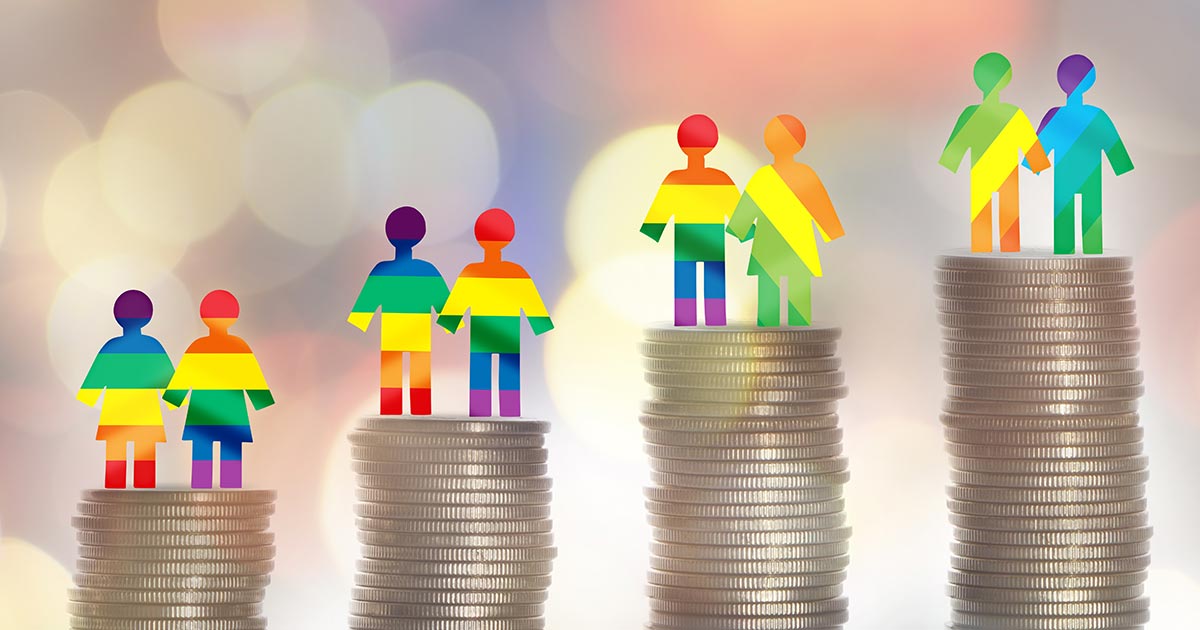Size Matters: South Africa’s LGBTI Market Valued at R250 Billion Annually

A landmark new report has quantified the size of South Africa’s LGBTI market, confirming that it makes a major impact on the economy and cannot be ignored.
On Thursday, The Other Foundation unveiled the findings of its Size Matters study at a launch in Sandton, Johannesburg, attended by LGBTI+ activists, media, and representatives from corporate South Africa.
“Until now, the significant economic power of LGBTI people has largely gone unrecognised as a result of the absence of data on the unique economic contribution of the LGBTI population,” states The Other Foundation.
“Addressing this knowledge gap is essential as we craft our own African narrative about the lived experiences of LGBTI people in our part of the world and envision a better future,” adds Neville Gabriel, CEO of The Other Foundation.
South Africa’s LGBTI Market Size
The study’s key findings reveal that South Africa’s LGBTI market is worth at least R250 billion annually, despite ongoing social challenges and responsibilities.
This figure is based on recent statistics suggesting that 1.4% to 1.65% of the country’s population identifies as LGBTI.
However, the report’s authors believe that the true size of the LGBTI community in South Africa is considerably higher, meaning the market’s value could well be double the conservative R250 billion estimate.
Other findings from the Size Matters report include:
- 44% of LGBTI people hold managerial roles, indicating significant advancement into influential positions in the workplace.
- 75% are employed either part-time or full-time.
- 61% are more likely to buy from inclusive businesses.
- 90% engage in some form of income-generating activity.
- 90% have aspirations to start a business.
Family and Social Impact
The study also highlights the impact of LGBTI individuals in broader social and family contexts and finds that:
- 35% have children or act as guardians to children.
- 70% provide financial support to others.

LGBTI People Not All Equal
The study revealed significant disparities within South Africa’s LGBTI community when data was broken down by race, gender, sexuality, and gender identity.
Respondents identifying as Black, LBQ (lesbian, bisexual, or queer) women, or as transgender or gender non-conforming were found to be in considerably more financially vulnerable positions than their white, male, and cisgender counterparts.
For instance, around 80% of Black and transgender/gender non-conforming respondents reported experiencing economic pressures, with 64% of these groups earning less than R25,600 per month.
Transgender and gender non-conforming individuals are also nearly 35% more likely to encounter employment barriers than the broader LGBTI population.
Limitations of the Study
The study surveyed 400 individuals in-depth, a sample that researchers describe as statistically representative.
However, they acknowledge some limitations, as the survey was conducted online and did not fully reflect South Africa’s racial demographics. They also note that the survey’s focus on economic impact may have discouraged participation by unemployed individuals.
“Despite these unavoidable limitations, the data still presents a fair picture of the economic profile of LGBTI South Africans, with unprecedented levels of detail and diversity across various socio-demographic indicators,” say the researchers.

Why the Study is Important
The Size Matters report makes the case that South Africa’s LGBTI market cannot be ignored by marketers, corporates, and policymakers, not only for reasons of equality and rights but also due to its considerable economic influence.
“This report is more than a set of statistics and charts. It is a call to action. It shows what can be possible if we affirm the value of every person and when we build economies where all can prosper, regardless of their sexual orientation, gender identity and expression, and sex characteristics,” says Gabriel.
He asserts that, “When LGBTI people do well, businesses will do well and South Africa can do well.”
You can download the full report here. Infographics courtesy of The Other Foundation.
Leave a Reply